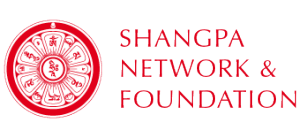Müchen Gyaltsen Palsang
མུས་ཆེན་རྒྱལ་མཚན་དཔལ་བཟང་།
mus chen rgyal mtshan dpal bzang
Alternative Name(s):
Nyaktön Chöjé Gyeltsen Pelsang (gnyags ston chos rje rgyal mtshan dpal bzang)
གཉགས་སྟོན་ཆོས་རྗེ་རྒྱལ་མཚན་དཔལ་བཟང་།
13/14th cent.
Period: 13th–16th // Early Masters
Müchen Gyaltsen Palsang’s family was one of practitioners from the region of Nyak. His father was named Dorjé Nyingpo and his mother Könchok. When she conceived, she had a vision of the Great Compassionate One entering her. When he was born, there were earthquakes and a rain of flowers.
When he was twenty-six he was fully ordained by Chöjé Gyaltsen Palsang and Rinchen Sönam. From them, and other masters, he learned the Kalacakra and the Sakyapa’s Lamdré teachings and so. He became so well known for his learning and understanding, that he was invited to Mongolia twice, earning the respect of the Mongol emperor and his people. After his return to Tibet he practiced in seclusion and experiences and realzations where indescribable.
When he heard of Khedrub Tsangma Shangtön‘s fame, he decided to see him and request the teachings of the Shangpa Kagyu from him. At the same time Lama Shangtönpa had a vision of the Swift-acting Awareness Protector, the Six-armed Mahakala, that a great disciple would come whom he should entrust with the lineage transmission. When they eventually met, Lama Shangtönpa passed on all the teachings and transmissions to Müchen Gyaltsen Palsang, without leaving out anything whatsoever. Having nothing but the very greatest respect and devotion for his teacher, Müchen Gyaltsen Palsang then practiced the precious Shangpa dharma and quickly accomplished all its practices, especially those of Illusory Body, Dream and Clear Light. He achieved the complete realization of Mahamudra and constantly dwelled in a meditative state.
He eventually settled in the Mü Valley, hence his name, and taught the Dharma there for the benefit of countless students. When he finally passed from this world, there were earthquakes, lights and rains of flowers. It is said that he went to the Blissful Pure Land.
Source: bla ma rnam bzhi’i rnam thar bsdus pa le tshan bzhi, shangs chos vol. 1, p. 657-698. (translation from Tibetan by Lama Shérab Drimé).

